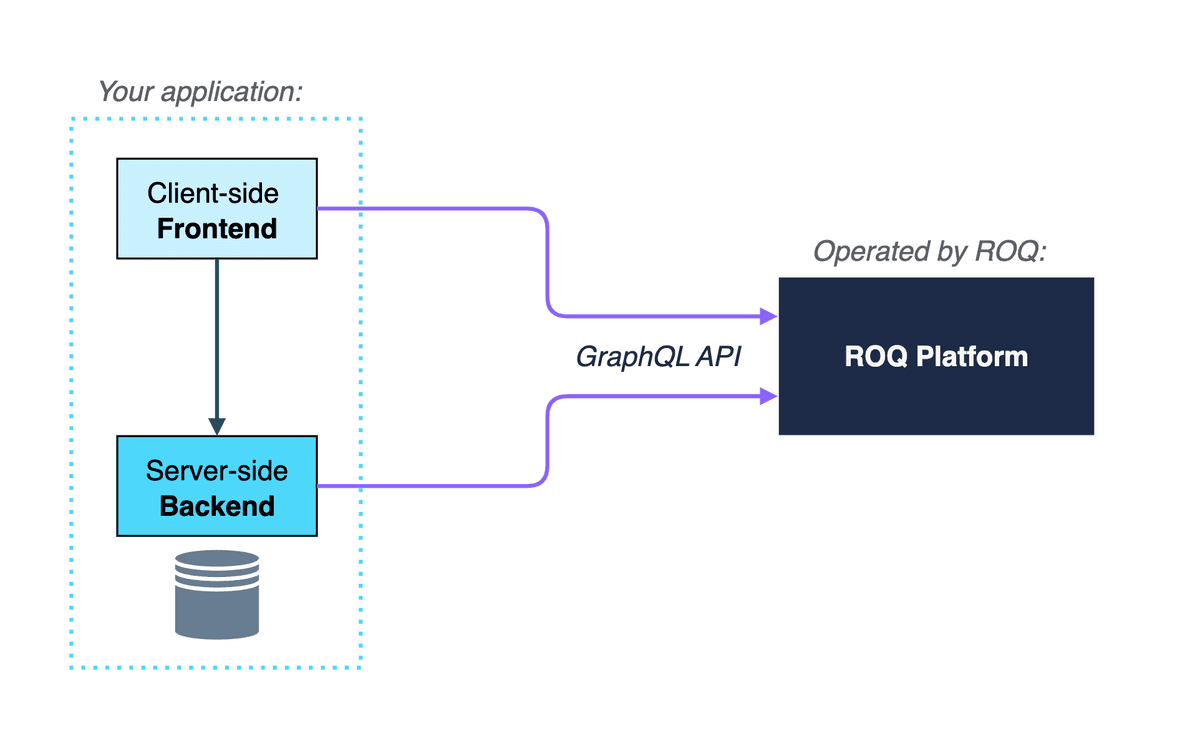ROQ API Overview
Introduction
All of ROQ's functionality is provided by ROQ Platform, a headless API-driven system that ROQ operates. ROQ Platform uses GraphQL as the primary approach for representing APIs. GraphQL is simple to use and easy to learn. We recommend starting your journey at the official GraphQL documentation: Introduction to GraphQL (opens in a new tab). The following picture shows a bird's eye view of the API.

Available APIs
You can find a generated GraphQL reference with all queries, mutations and types here: ROQ Platform API (opens in a new tab). This documentation focuses on the most relevant functionalities:
- Uploading and fetching files
- Sending emails
- Sending and receiving notifications
- Managing users
- Managing user groups
Using the GraphQL Sandbox
You can run GraphQL queries yourself using the sandbox. See instructions here.
Using the SDK
ROQ provides an SDK for Node.js applications, simplifying the API's usage but still allowing you to use GraphQL queries and mutations if needed. Please start with the SDK documentation.
GraphQL basics
In case you want to use GraphQL directly, we recommend to make yourself familiar with the basics of using queries and mutations:
- Queries and mutations
- Fetch records by ID
- Adding relations
- Counting
- Order, Limit and Offset
- Filtering of data
URL and credentials of ROQ Platform
ROQ operates multiple instances of ROQ Platform. You can find the URL of your instance when you log in to
ROQ Console (opens in a new tab). There you also find the other credentials like apiKey and environmentId
which you need to pass to the ROQProvider wrapper in your
client-side application.
Client- and server-side APIs
Some GraphQL mutations aren't available on the client side of your application and can only be used from the server side. That's because users could manipulate parameters and perform undesirable behavior. For this reason ROQ Platform exposes two endpoints:
{URL}/v01/graphql- API for the client-side of your application. Interactions require a user token.{URL}/v01/server/graphql- API for the server-side of your application. Interactions require a user token and theapiKey.
Don't share the apiKey with anyone and don't use it on the client-side on your application. It's also
recommended to provide it via environment variables and don't place it into your repository.